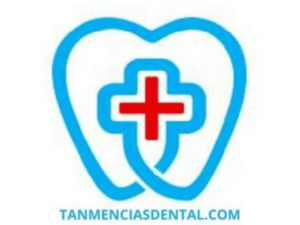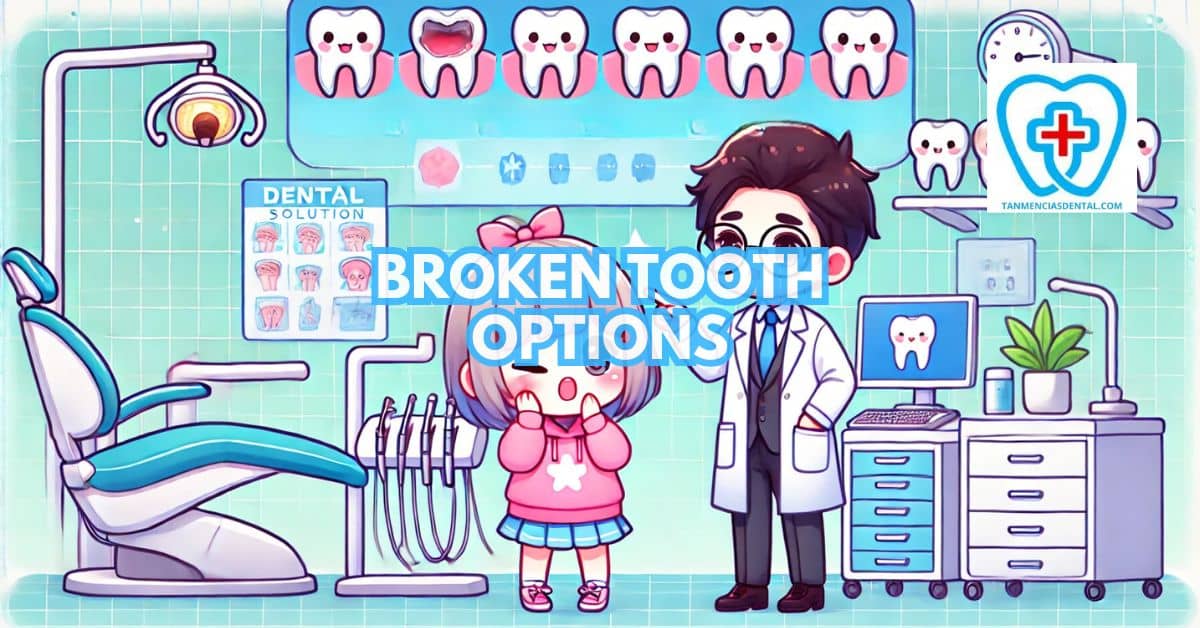A broken tooth can be painful and unsettling, and it’s natural to feel confused about how to fix it.
Luckily, there are many treatment options to restore your smile and make your tooth functional again.
We’ll explore different broken tooth options and help you decide which one might be best for your situation.
Whether it’s a minor chip or a significant break, understanding your choices will help you make an informed decision.
Let’s dive into the available treatments and how they work.
1. Understanding the Different Types of Tooth Damage
To choose the right solution, it helps to understand the type of tooth damage you have.
A broken tooth can range from a minor chip to a major break that exposes the tooth’s nerve.
Minor chips are often cosmetic concerns, while deeper cracks can compromise the entire tooth structure.
In severe cases, a broken tooth can lead to infection or intense pain if the inner pulp is exposed.
Knowing the type and severity of your damage helps you and your dentist decide on the most suitable treatment.
🦷 What Do Dreams About Brushing Teeth Mean?
2. Dental Bonding: A Quick Fix for Minor Chips
Dental bonding is a simple and cost-effective treatment for minor chips and cracks.
During this procedure, a dentist applies a tooth-colored resin to fill in the damaged area and reshape the tooth.
This option works well for small aesthetic fixes and is usually done in just one visit.
The resin is carefully molded and then hardened using a special light, making it blend seamlessly with your natural tooth.
Dental bonding is an affordable and efficient way to restore minor damages without the need for extensive procedures.
🦷 What to Do When You Have a Broken Tooth But No Pain
3. Using Fillings to Restore Broken Teeth
Fillings are often used for broken teeth when part of the tooth has been lost but the damage isn’t too extensive.
A filling, usually made from a tooth-colored material, restores the shape of the tooth and protects it from further damage.
This option is great for minor breaks, especially on back teeth that are used for chewing.
The dentist will clean the damaged area, remove any decay, and apply the filling to restore the tooth.
Fillings not only restore the function of the tooth but also help prevent bacteria from entering and causing further decay.
🦷 What Does Brushing Your Teeth With Salt Do?
4. Crowns: The Best Solution for Major Breaks
If your tooth has a significant break, a dental crown might be the best solution.
A crown is a cap that completely covers your broken tooth, restoring its shape and strength.
Crowns are particularly helpful for broken molars and other teeth that endure heavy biting forces.
They can be made from different materials, such as porcelain, metal, or a combination, depending on the tooth’s location and your preferences.
A crown provides a long-lasting solution that both strengthens the tooth and restores its natural appearance.
🦷 Are Dental Hygienist Doctors? The Difference Between Dental Hygienists and Dentists Explained
5. Veneers: A Cosmetic Option for Broken Teeth
For teeth with visible chips or cracks, veneers can be a great cosmetic option.
Veneers are thin shells placed over the front of a broken tooth to improve its appearance.
They are particularly popular for front teeth and can provide a natural-looking and long-lasting solution for minor damages.
The dentist customizes the veneer to match the color and shape of your surrounding teeth, ensuring it blends in seamlessly.
Veneers are a good option if you want to enhance your smile while repairing minor imperfections.
🦷 How to Get Rid of Bad Breath Even After Brushing Teeth
6. Root Canals: Saving Teeth with Severe Damage
When a broken tooth has exposed the nerve or caused deep pain, a root canal might be necessary.
In this procedure, the damaged or infected tissue inside the tooth is removed, and the tooth is sealed to prevent further problems.
Root canals are often followed by placing a crown to strengthen the tooth.
This treatment allows you to keep your natural tooth rather than extracting it, which is beneficial for maintaining proper chewing and alignment.
While the procedure might sound intimidating, it is highly effective for saving a severely damaged tooth and relieving pain.
🦷 Can a Broken Tooth X-Ray Reveal More Than Just the Obvious Damage?
7. When Tooth Extraction Is Necessary and Your Replacement Options
In some cases, a broken tooth is beyond repair, and extraction is the only option.
Once the tooth is removed, you can choose from several replacement options, such as dental implants, bridges, or partial dentures.
Each replacement option has its benefits, depending on your overall oral health and budget.
Dental implants provide a permanent and natural-looking replacement, while bridges and partial dentures are less invasive options.
Discussing these choices with your dentist can help you select the best way to replace a missing tooth and restore your smile.
🦷 How Do Dentists Determine if Braces Are Necessary for a Patient?
8. How Age and Health Affect Your Treatment Choices
Your age and overall health can play a big role in deciding on the best treatment for a broken tooth.
Younger patients may have more durable options, while older adults or those with health concerns might require a more conservative approach.
Some procedures, like dental implants, may not be suitable for individuals with certain health conditions or weaker bone structures.
Additionally, younger teeth tend to recover better, which can influence the dentist’s recommendation.
Your dentist will take all these factors into account to ensure the chosen treatment is safe and effective for your particular situation.
🦷 Are Dentists Open on Weekends? How Weekend Hours Benefit Patients with Busy Lives
9. Understanding the Costs and Insurance Coverage for Broken Tooth Repairs
The cost of repairing a broken tooth can vary depending on the treatment you need.
Crowns and implants tend to be more expensive, while bonding and fillings are more affordable.
It is also important to check if your dental insurance covers the treatment you need, as some procedures may have partial coverage or require out-of-pocket payments.
Your dentist’s office can help you understand your insurance benefits and estimate your overall costs.
Knowing the costs upfront can help you plan the best treatment without unexpected financial stress.
🦷 What Diseases Can You Get From Not Brushing Your Teeth?
10. Why Timely Treatment Is Crucial for Your Broken Tooth
Addressing a broken tooth promptly is crucial to prevent further complications.
Ignoring a broken tooth can lead to infections, pain, or even tooth loss.
Seeking treatment quickly helps ensure the best possible outcome, keeps your mouth healthy, and saves you from more complex and expensive treatments down the road.
The longer you wait, the more damage can occur, making it harder to restore the tooth or nearby teeth.
Timely intervention not only saves the broken tooth but also contributes to overall oral health.
👨⚕️ Conclusion
Choosing the right broken tooth option depends on the type of damage, your health, budget, and personal preference.
Whether you need a simple bonding procedure or a more involved root canal, timely care can help restore your smile and protect your oral health.
Talk to your dentist to decide which treatment is the right choice for you.
Remember that every case is unique, and the best solution will address both the functional and aesthetic needs of your tooth.
With the right care, you can regain comfort, confidence, and a healthy smile.
😊 Self-Promotion
Looking for expert dental care in Parang, Marikina City?
Visit Tan-Mencias Dental Clinic for friendly and professional service.
Have questions?
Call us at 9171451074, message us on Facebook, or use our website’s contact form.
We’re here to keep your smile healthy and bright—see you soon!

